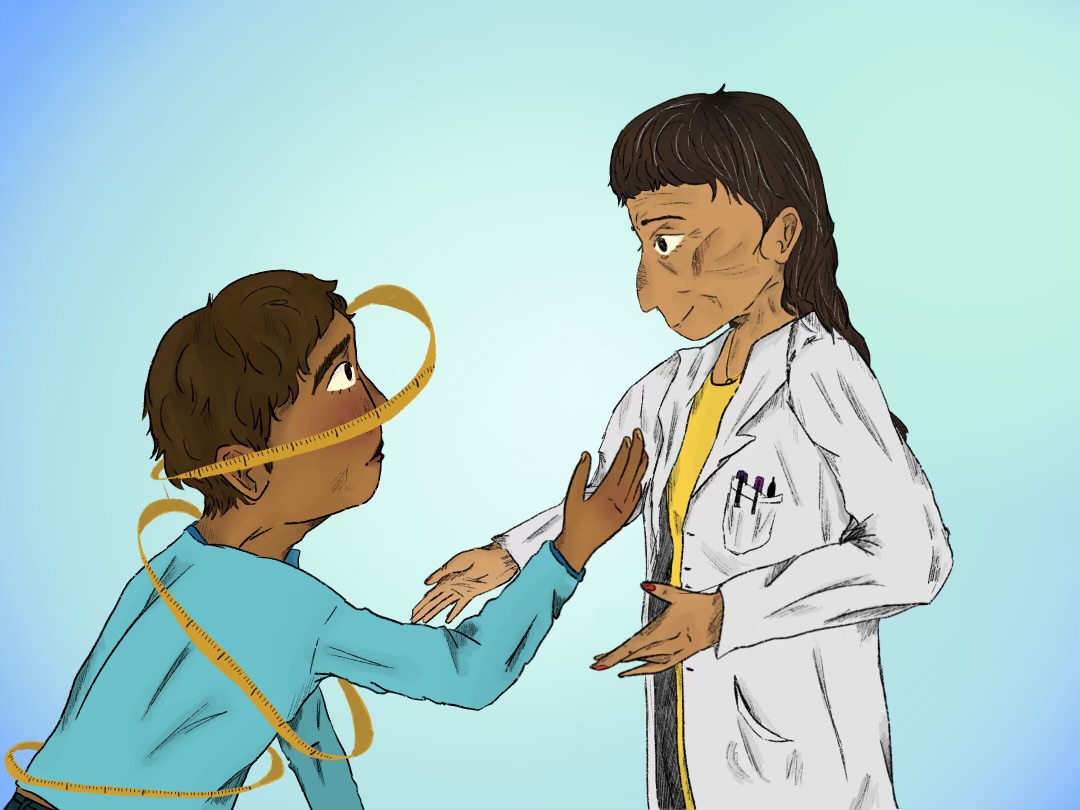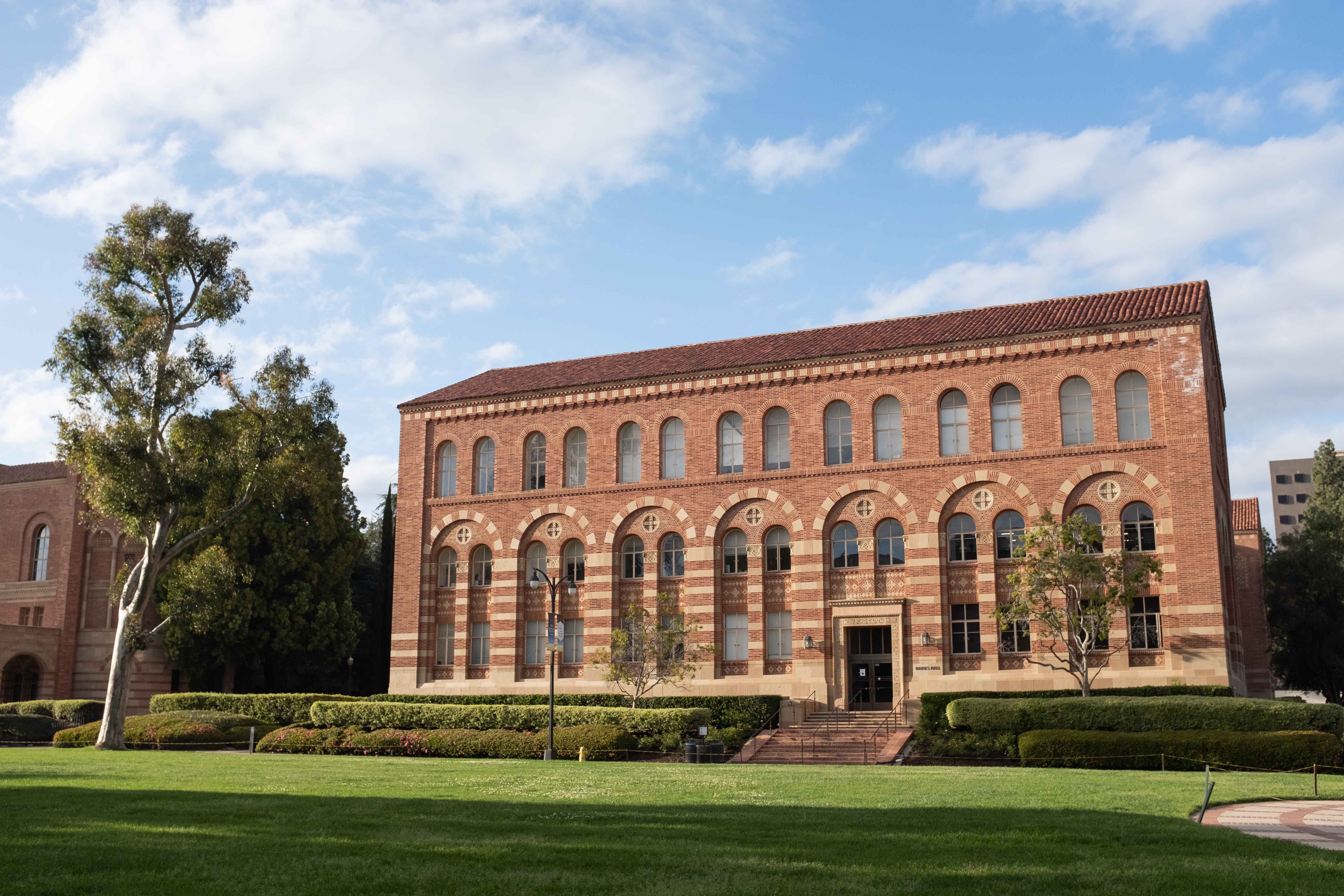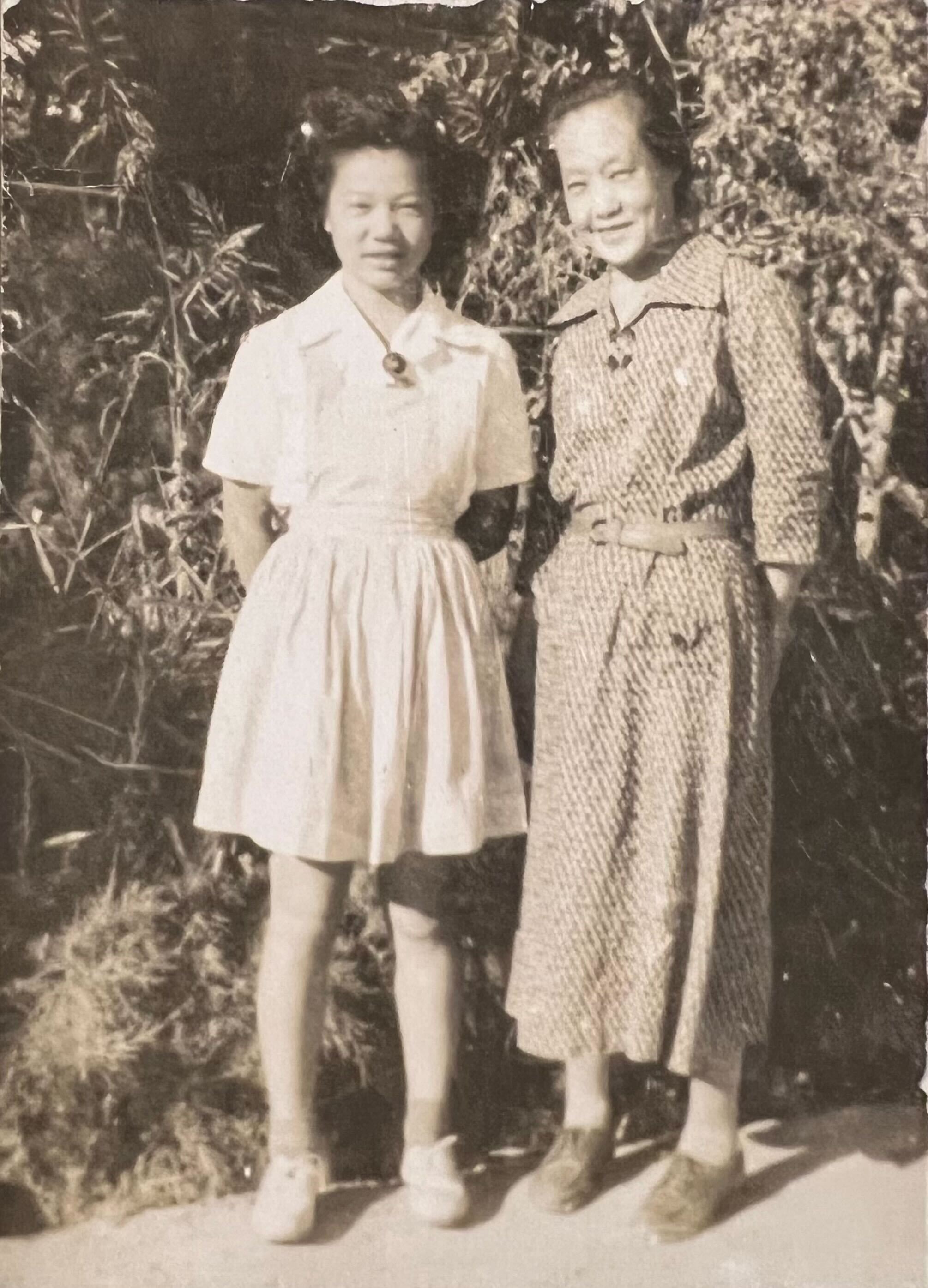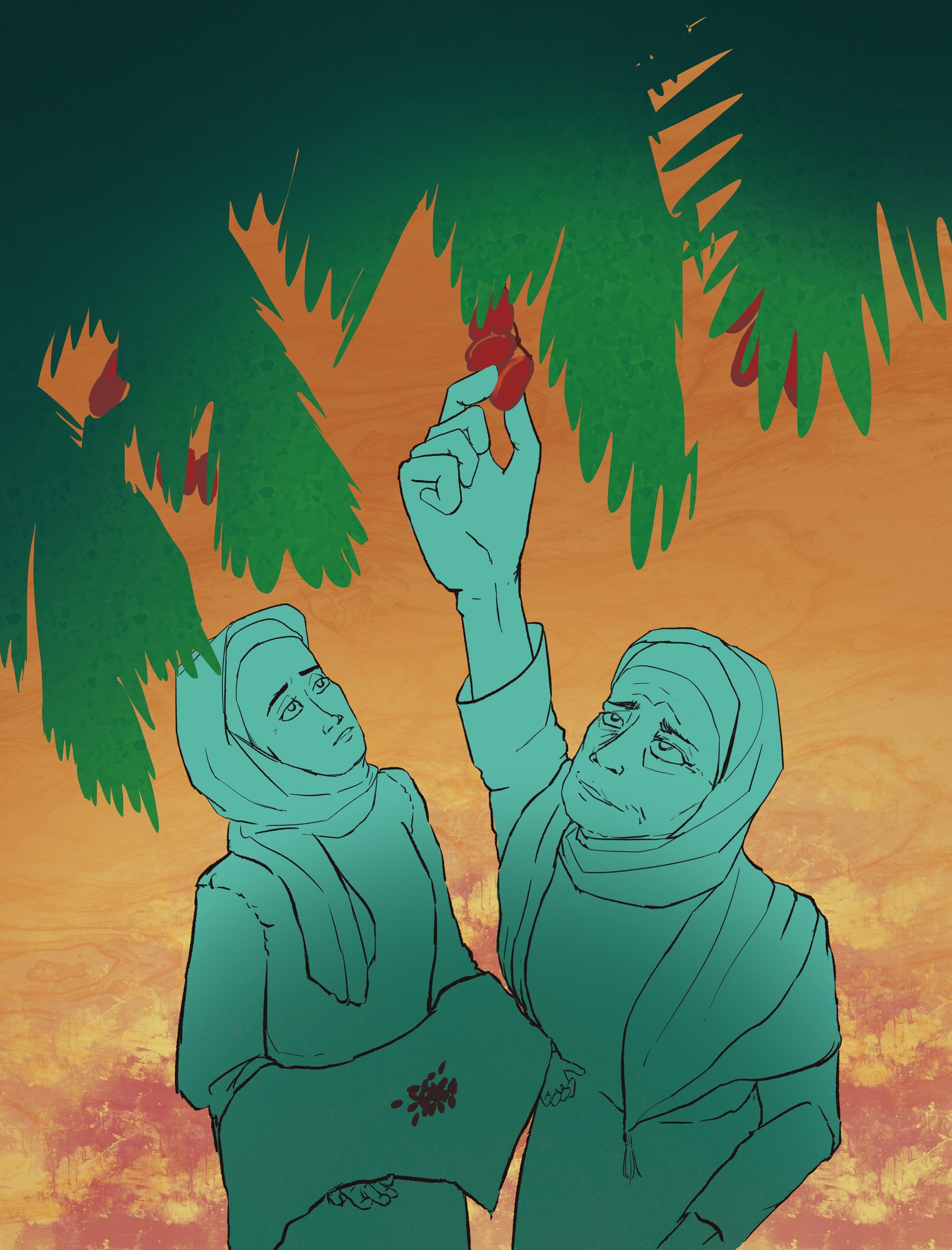Uncomfortable Conversations: Embracing mixed-race heritage reveals complexity of racial, ethnic identity
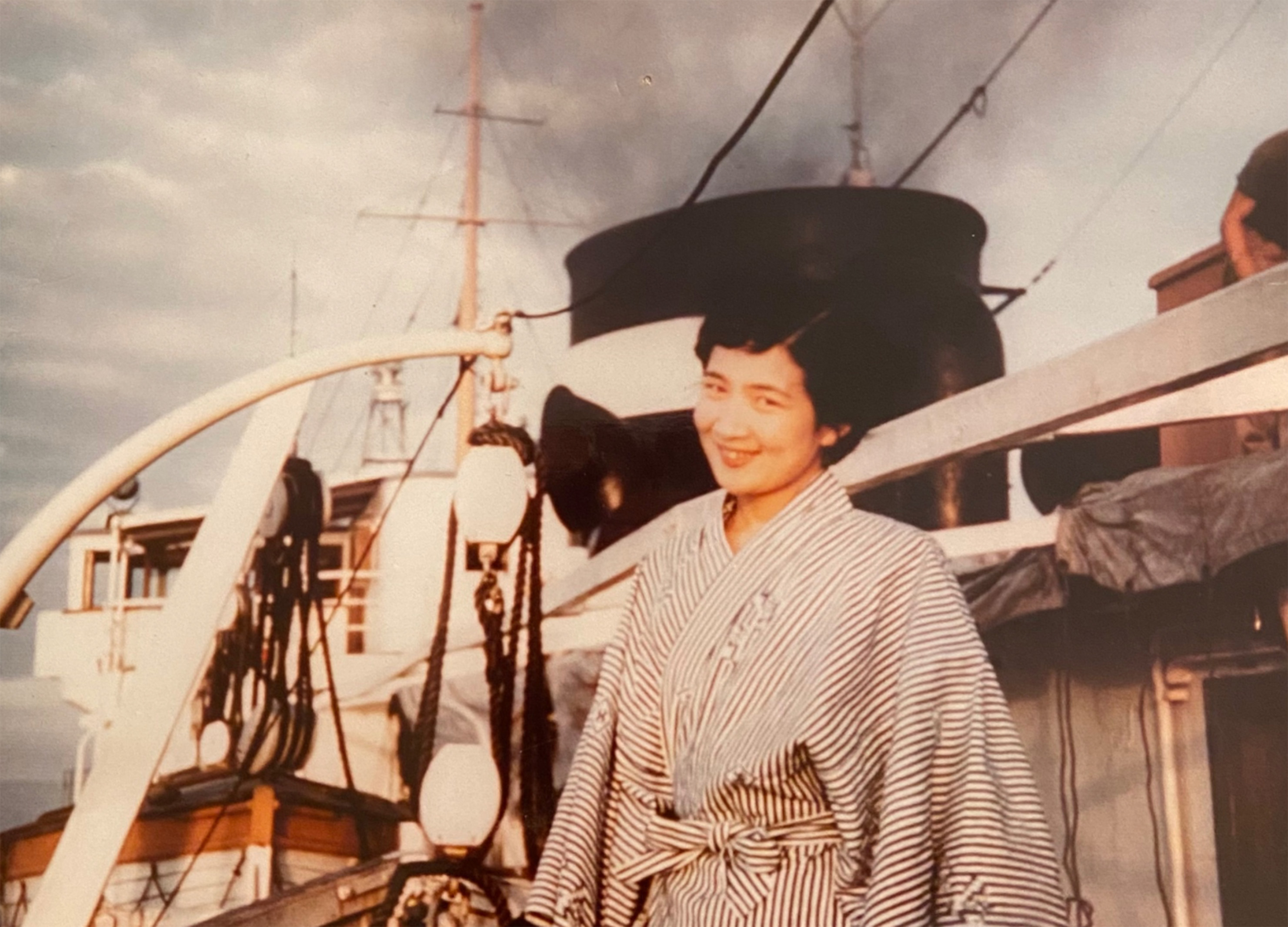
Nobuko Brehmer, columnist Kirsten Brehmer’s grandmother, poses for a portrait on a ship. (Courtesy of Kirsten Brehmer)
By Kirsten Brehmer
April 6, 2025 2:31 p.m.
This post was updated April 10 at 7:14 p.m.
“Uncomfortable Conversations” is a series by Kirsten Brehmer exploring a broad range of topics that are hard to talk about, often go unspoken and need a space to be heard. The heart of this series is the challenging experiences, questions, life events, personal struggles and conflicts that we shy away from sharing but need to talk about. She hopes this column will help create a community through conversation by advocating for the importance of growing our dialogue, educating ourselves and being open to learning and listening to one another’s opinions. Fellow Bruins are also welcome to submit op-eds or letters to the editor as part of this series to expand upon whatever conversations they believe need the space to be had.
I’ve often wondered what it would look like for me to embrace being a quarter Japanese.
For a long time, I understood my partial Japanese heritage as a marker of my ethnic background, making me hesitant to fully embrace this aspect of my identity.
I often consider what I should indicate on a job application when it asks what my race or ethnicity is. Most of the time, I just indicate that I am white because that is how I am usually perceived.
In other words, if I don’t look the part, can I even justify saying I come from that background?
My Japanese roots come from my grandmother Nobuko, who immigrated to America in 1955 when she was 23 to attend university.
Here, she met my grandfather, who was born and raised in the United States. They had their wedding ceremony in Japan but decided to raise a family in America. Not too long after, my dad, who is half-Japanese, came into the picture.
Nobuko died when my dad was in his late 20s; I never had the chance to meet her. I only know her through pictures and shared memories.
Because my grandmother wanted to assimilate into American culture as best as she could due to lingering racial prejudice against Japanese people after World War II, she provided my dad and his sisters a very traditional American childhood.
Revolving around intangible beliefs, physical practices, places and stories, cultural heritage is rooted in inheritance and sustained through legacy, as defined by Blue Shield International, a nongovernmental organization committed to protecting the cultural properties of the world in the event of conflict – often referred to as the cultural equivalent of the Red Cross.
When it comes to my own family’s heritage, a lot was lost because of the personal trials and tribulations my grandmother experienced as a Japanese woman in America during the 1970s and ’80s. Her priority was to protect her children and give them a chance to fit into American society as easily as possible.
Whatever physical practices or beliefs Nobuko was accustomed to embracing in Japan, she likely put them aside when raising my father and his sisters.
This woman did what she had to do to give my dad and his sisters a childhood of peace and nourishment, and I not only respect her for doing this but also love her. She raised the man who raised me, and I couldn’t be more thankful.
This part of my family history has never felt hidden to me, and I was even blessed with the middle name Nobuko, but my Japanese heritage still feels like a distant part of myself that I have yet to understand.
I have often come to the conclusion that because I am only a quarter Japanese and mostly white, there is a limit to what I can rightfully identify with in Japanese culture.
Katsuya Hirano, a professor of history, principally researches settler colonialism and racial capitalism in early modern and modern Japan through the lens of critical theory.
“We should never take ethnic (or) racial identity or categories as innate, unchanging and monolithic,” Hirano said. “That falls into a very rigid, antagonistic identity politics that I don’t believe in.”
Our identity is far from a straightforward concept. According to the Pew Research Center and The Scottish Public Health Observatory, being born with multiple ethnic identities can complicate one’s sense of self and how they choose to define and understand their ethnicity, which is shaped by a variety of cultural factors.
In fact, ethnicity does not comprehensively determine our identity. Rather, it is our identities that dictate how we incorporate our ethnicities into our everyday lives.
“We consist of so many different influences,” Hirano said. “This artificial, ethnic, racial boundary – restricting the way we understand ourselves – it’s a tragedy to me.”
Having a mixed-race identity is nonetheless rooted in personal experience, history, cultural influences and societal pressures. Being of a mixed-race identity is a different experience for everyone.
Recently, I have become aware of the idea of being white passing, which is when a person is perceived as white when they have nonwhite heritage.
For some individuals, their outward appearance obscures their lived experiences and how they relate to those with similar racial identities but who do not pass as white.
Accompanied by harmful practices and beliefs revolving around eugenics, racial purity and white supremacy, using the idea of passing is historically harmful. Just because someone may not look like a specific ethnicity doesn’t mean they aren’t that ethnicity.
Our identities cannot be standardized.
I recognize that I am white, and with that comes undeniable privileges that continue to exist because of past and present racism in our country. But my white privilege has never physically stopped me from exploring Japanese culture.
However, what stopped me were my insecurities that arose in conversations revolved around race and ethnicity.
Race is often defined as someone’s perceived inherited physical characteristics associated with one’s ancestry, while ethnicity is a shared social construct of cultures and traditions, according to the American Psychological Association.
There was an initial intimidation toward whether or not I was justified in exploring my Japanese heritage in consideration of my overall whiteness, as well as an ongoing worry that my knowledge on ideological topics was lacking.
If we want to overcome prejudice and stereotypes about other people, Hirano said we should be questioning these categories and how we have structured society around them.
It’s important to not only understand these concepts which often become intertwined with one another but also develop language that centers around inclusivity rather than exclusivity.
Becoming more linguistically and emotionally knowledgeable on our own ethnic and racial backgrounds gives us the tools to understand ourselves that much more.
“There is no such a thing as a unified, homogeneous Japanese culture,” Hirano said. “Japanese culture consists of so many different influences over time, from history.”
Culture and identities are not stagnant parts of the human self, but rather continuously changing and growing within us.
Society is always moving, developing and changing. Values change, practices change, people change and culture changes.
Hirano said he favors a more open-ended understanding of what it means to be Japanese, and I think this should apply to any racial-ethnic category.
The subjects of race and ethnicity are complicated – they don’t have to be, but they are.
Understanding that these categories can promote discrimination or endorse social hierarchies is something we should keep in mind not only when exploring our own cultural identities but also when negligently placing these identities on others.
If we want to understand who we are and where we come from, we must be curious enough to look, courageous enough to choose how it defines us and conscious enough to understand that labels have implications, and these systems can create toxic cycles of ignorance.
“In an ideal world, we just want to meet as a person and see beauty in each other,” Hirano said.
I no longer see being a quarter Japanese as an issue when it comes to exploring this part of my heritage. Instead, I see it as an opportunity for myself to open up to the world around me and learn.


